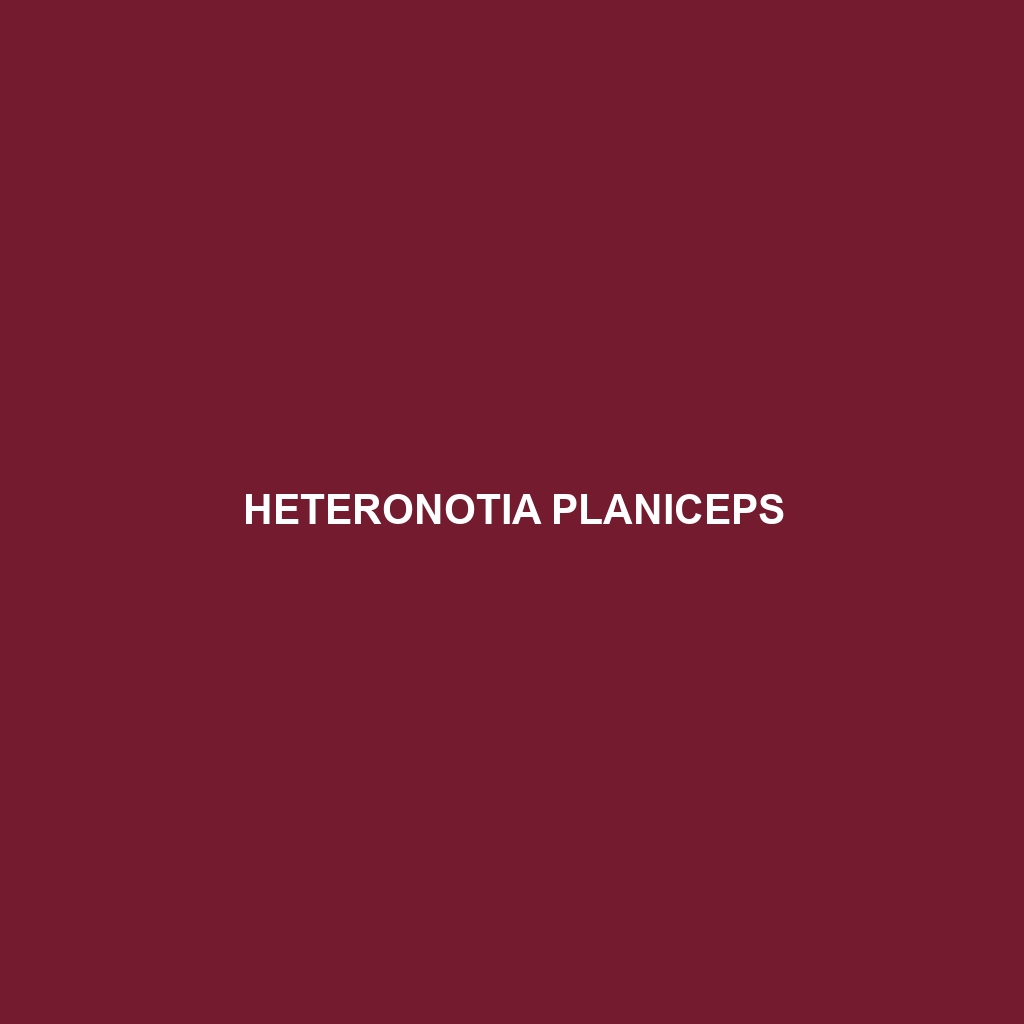Common Name
Heteronotia planiceps
Scientific Name
Heteronotia planiceps
Habitat
Heteronotia planiceps, commonly known as the flat-headed gecko, is primarily found in the arid regions of Australia. This species thrives in various habitats such as rocky outcrops, woodlands, and scrublands, showcasing a remarkable adaptability to harsh conditions. The climate in these regions is typically semi-arid to arid, characterized by hot summers and mild winters, which create an ecosystem where Heteronotia planiceps can flourish. These geckos are often located in the temperate forests and savannas of Australia, where they utilize their environments for shelter and hunting. Their habitats are usually composed of dry soil with scattered vegetation, which plays a crucial role in their survival.
Physical Characteristics
Heteronotia planiceps exhibits several distinct physical features that set it apart from other gecko species. Typically growing to lengths of about 7.5 to 10 centimeters, the flat-headed gecko has a relatively flattened body, which aids in navigating through rocky terrains. Its coloration varies but generally includes a combination of browns, grays, and creams, allowing it to blend seamlessly into its surroundings for camouflage. The head is notably flattened, hence the name ‘flat-headed’, and this unique shape assists in thermoregulation, aiding the gecko in managing body temperature during the heat of the day. Additionally, the skin texture is smooth, with small granular scales that provide it an edge in agility while climbing and darting across rocky surfaces.
Behavior
In terms of behavior, Heteronotia planiceps is primarily nocturnal, exhibiting a range of activities during the night hours. These geckos are solitary creatures, often found hunting and exploring their territory alone. Their hunting strategy involves waiting for prey to approach and then swiftly capturing insects and other small invertebrates. Mating rituals usually occur during the warmer months when males become more territorial and engage in displays to attract females. The flat-headed gecko’s quick movement and ability to climb make it a skilled predator. Interestingly, they are known to exhibit tail autotomy, a defense mechanism in which they can shed part of their tail to escape predators.
Diet
Heteronotia planiceps is primarily an insectivore, feeding on a variety of insects available in its habitat. Its diet mainly consists of crickets, beetles, and spiders, which it hunts with agility. The flat-headed gecko employs a sit-and-wait strategy for hunting, using its excellent camouflage to ambush unsuspecting prey. This predatory behavior is crucial for maintaining the balance within their ecosystem, as it helps control the populations of insects in their environment.
Reproduction
The reproductive cycle of Heteronotia planiceps is fascinating and underscored by seasonal patterns. Breeding typically occurs during the warmer months, usually from spring to early summer. After mating, females lay clutches of one to two eggs, which they bury in sandy or loose soil, providing natural insulation and protection. The incubation period lasts around 60 days, after which the juveniles emerge, fully formed and ready to fend for themselves. Parental care is non-existent after the eggs are laid, as the species relies on the natural instinct of the young to survive in their environment.
Conservation Status
Currently, Heteronotia planiceps is classified as a species of Least Concern according to the IUCN Red List. However, they face potential threats from habitat destruction, particularly due to agricultural expansion and urban development. Conservation efforts focus on habitat preservation and environmental regulations to maintain the integrity of their ecosystems. Public awareness campaigns also aim to educate communities about the importance of this species in maintaining ecological balance.
Interesting Facts
One of the most intriguing aspects of Heteronotia planiceps is its ability to change color slightly in response to environmental conditions, a feature that enhances its camouflage against predators. Moreover, these geckos possess a unique adhesive ability in their pads, allowing them to climb smooth surfaces effectively. Additionally, the flat-headed gecko is known for its strikingly fast reflexes, a trait that aids in evading predators and capturing prey.
Role in Ecosystem
Heteronotia planiceps plays a vital role in its ecosystem as both a predator and prey. As an insectivore, it helps control insect populations, contributing to the health of its environment. Furthermore, it serves as a food source for various predators, including birds and larger reptiles, establishing a balance within the food web. Its presence indicates the overall biodiversity and health of the ecosystems in which it resides, making the flat-headed gecko a critical component of its habitat.
